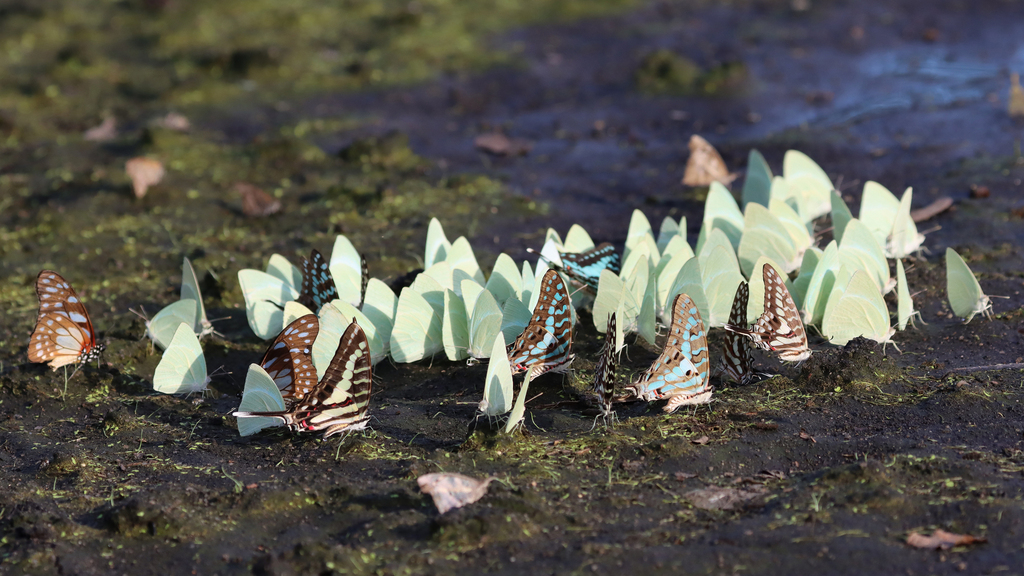This week's butterfly is one of the more recently recognized species that were named after living people. Graphium junodi commemorates Henri-Alexandre Junod. While some sources say it's not known to be even threatened, some have listed it as an endangered species.
Roland Trimen, who first described this species and had the privilege of naming it after the Rev. Dr. Junod because Junod sent him specimens, knew nothing about the early life forms, but if you're familiar with butterfly anatomy his description should enable you to draw a picture of the adult:
There are two stories about where to find this butterfly. Some sources say it's only ever found in Mozambique. Some say it's worth looking for in Angola and Zimbabwe, also. The International Swallowtail Butterfly Network say that individuals seen in those countries were probably only visitors.
According to a guidebook published by the government of Mozambique, a good place to look for this butterfly would be Chimanimani. The book can be viewed online in Portuguese; the discussion starts on page 48.
A forest-specific discussion in English is online at
A tour group in Uganda says that Graphium junodi can be seen in Bwindi (admission: $30 per day for foreign visitors). They don't mention whether the butterflies are reared indoors as a display. The species is not known to live in natural conditions in Uganda.
Although an authoritative book on African butterflies states that reports of this species being found in Angola were errors, the species still appears on checklists of butterflies to look for in Angola. They fly fast, according to Pringle as quoted by Williams, and can be mistaken for species with similar looks, especially G. polistratus. Pringle adds that they are found between July and September, and between January and April.
All butterflies drink water. Many male Swallowtails are most easily found at puddles, even polluted puddles, drinking water with high concentrations of mineral salts. Nearly all photographs of Graphium junodi found online show males at puddles.
Another photo by Martinmandak. Hmm...this one's palpating a leaf in the shade of the forest, and the colors show lower contrast than those of the puddle sippers. Does that mean it's female? Nobody can be sure. The ones that lay eggs are female.
The caterpillars are said to resemble other Graphium larvae, with humped backs and four pairs of harmless but unpalatable bristles.
The pupae are said to have that irregular pyramid shape, with a hump along where the butterfly's back will be, perhaps even more conspicuously than other Graphium chrysalides.



No comments:
Post a Comment